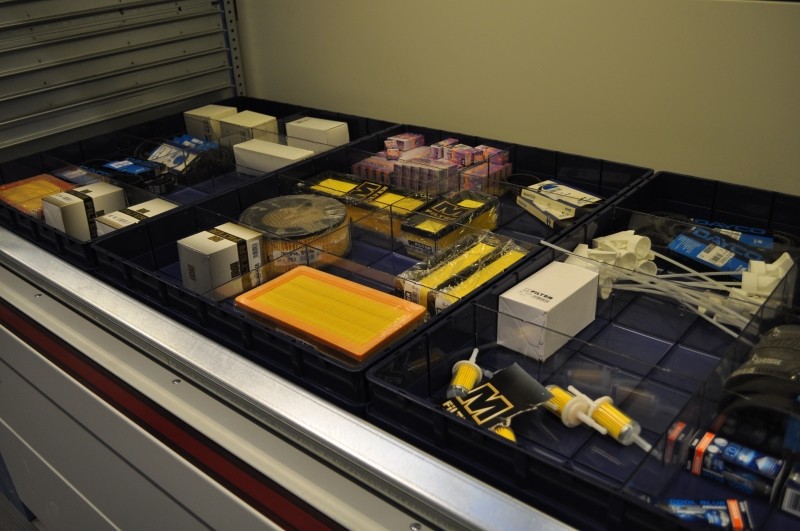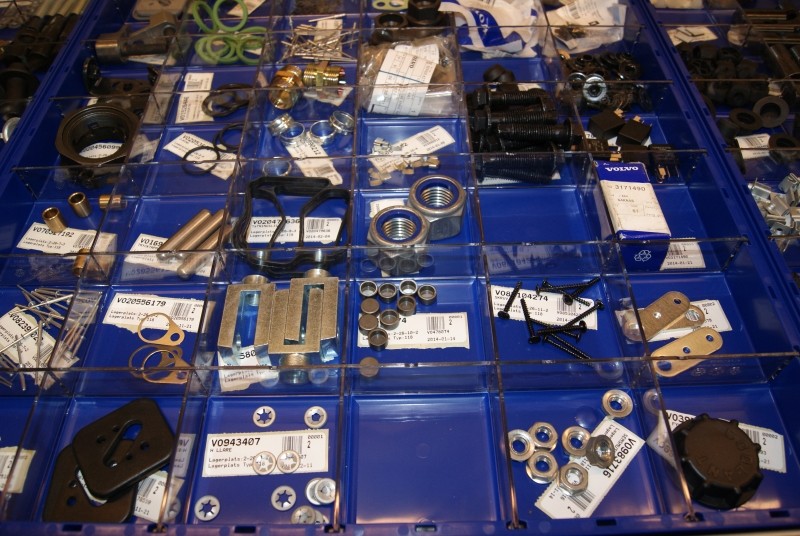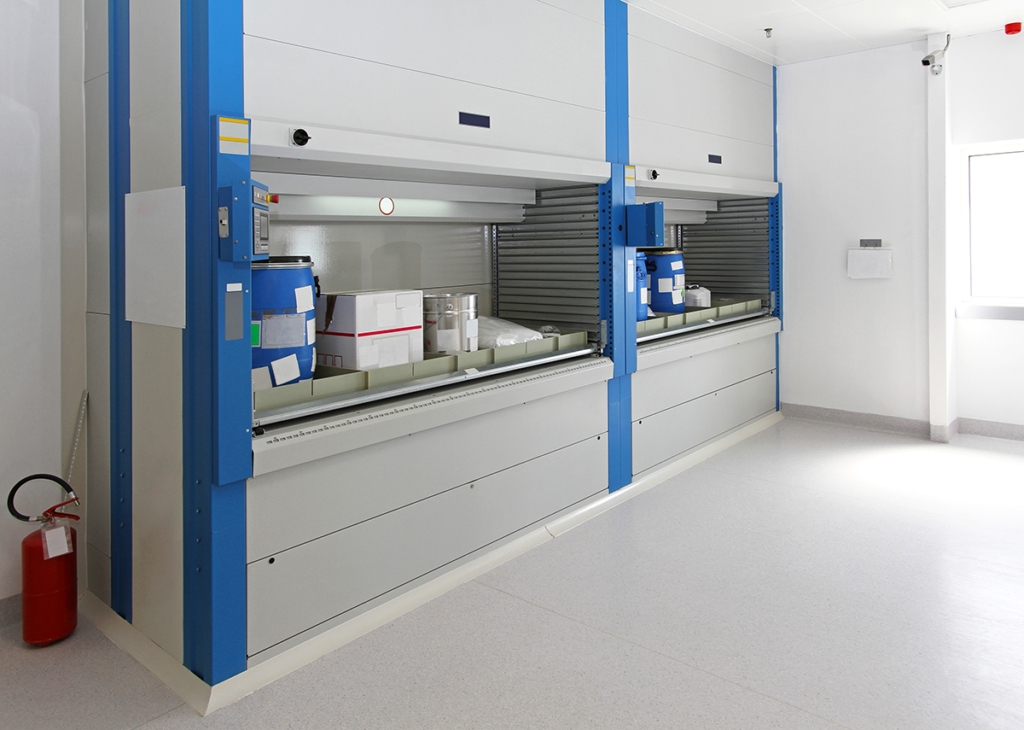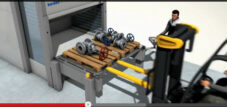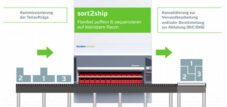A head start through efficient spare parts logistics
Language selection 📢
Published on: March 31, 2016 / Update from: September 28, 2021 - Author: Konrad Wolfenstein
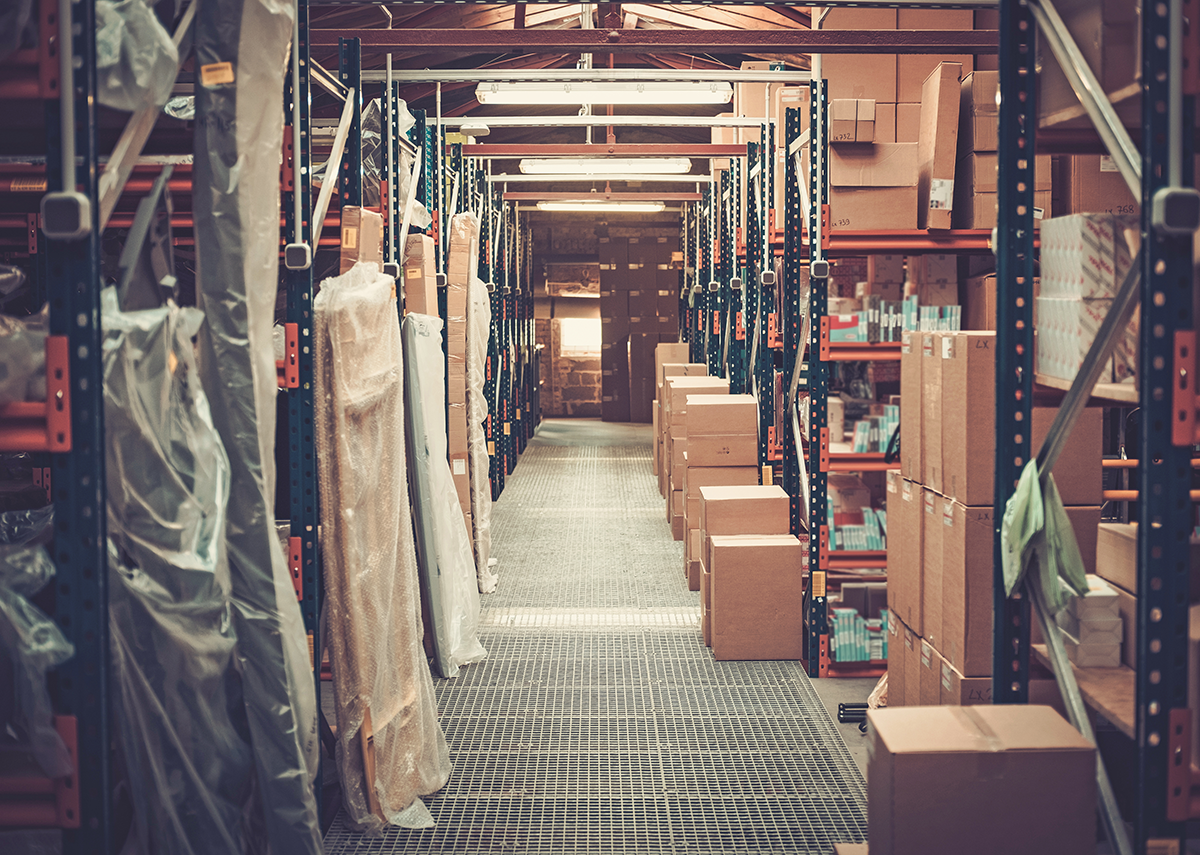
Not necessarily the most efficient solution: chaotic storage in a classic rack warehouse – Image: Nejron Photo|Shutterstock.com
How workshops and car dealerships can score points
Like many other industries, the automotive market is characterized by an intensely competitive environment. This affects both the new car and the after-sales business of car dealerships and vehicle workshops. The challenges include in particular:
- increased competition in saturated markets
- Declining profit margins, particularly on new car sales
- Increasing process complexity due to ever shorter product cycles and growing diversity of vehicle types
- decreasing brand loyalty on the customer side
- higher demands on services
In order to be able to operate productively in these times characterized by strong competition and increasing levels of demands, efficient spare parts logistics are becoming increasingly important. This affects companies with a high level of service orientation that have to constantly maintain a smooth supply of spare parts for their customers. This applies in particular to larger car dealerships and vehicle workshops that aim to continuously supply their affiliated branches with the parts they require.
And so the trend towards more efficient structures and processes is becoming more prominent in spare parts logistics, which is often neglected. Identifying and implementing potential is not always easy.
Spare parts logistics in the automotive sector
And this is exactly where two opposing requirements collide: On the one hand, a lot of valuable storage space is required to store the numerous spare parts, which is also used in the workshop area for maintenance and repair work.
The problem is further exacerbated by
- an increasing variety of variants from car companies
- Trend towards ever greater individualization of vehicles
- Growing ranges of finished and spare parts as well as tools
- Shorter service times due to increased customer requirements
- increasing after-sales and spare parts business
Given the growing need for spare parts and stagnating storage space, sophisticated logistics are required to optimize the internal material flow.
time is money
Conventional storage systems (e.g. static shelving or drawer cabinets) are often used in workshops and spare parts warehouses, where the wide range of mostly small wear and spare parts are stored unpackaged or in boxes and containers. However, this type of storage, including mostly manual order management, is time-consuming and labor-intensive. In addition, with the large range and the large number of requests, the risk of errors when selecting and shipping the items increases. But for companies, time is money and mistakes cost time. This increases the pressure to always have the right part available at the right time. So what needs to happen for this to be implemented in the warehouse?
Store efficiently with automated storage systems
It is important for automotive companies (and not only those) to optimize their existing storage space for efficient spare parts storage. In view of the growing range, an increase in space must first be created. It must also be ensured that spare parts can be accessed quickly and without errors.
Instead of conventional shelving solutions that take up a lot of space and are prone to errors, dynamic systems are available that efficiently manage the storage and provision process. They offer a whole range of advantages:
More efficient picking through quick and precise part removal. Here the items are stored via a central removal opening and made available automatically. In addition, visual display elements reduce manual errors during the picking process.
Shorter processing times, as the staff's walking distances are significantly reduced by being available at the workplace. In this way, the pickers' travel time is reduced to zero. A factor that takes up to 65% of the picking time in shelf warehouses. In addition, quick and targeted access to the stored goods avoids unproductive search times. The logical consequence is to increase the throughput many times over.
Safe and ergonomic operation, because the goods-to-person principle automatically provides the order picker with the requested items at the removal opening of the storage system. Stressful activities such as lifting heavy loads are eliminated. Protective doors and grilles also reduce the risk of injury. As a result, sickness-related absences are reduced.
Lower personnel costs thanks to automated device control. Employees can instead be deployed in more profitable areas such as workshops or customer service, as fewer staff are required in the warehouse. Thanks to the intuitive operation, there is no longer any need for extensive training for the order pickers.
The use of dynamic storage devices leads to an increase in storage volume while simultaneously saving space, increasing productivity and reducing costs. All advantages that help companies secure their competitive position while optimizing the quality of customer contact through improved services.
Ultimately, the devices ensure a clean, tidy work environment that is presentable to customers. Not unimportant when it comes to their assessment of the quality and competence of the provider.




